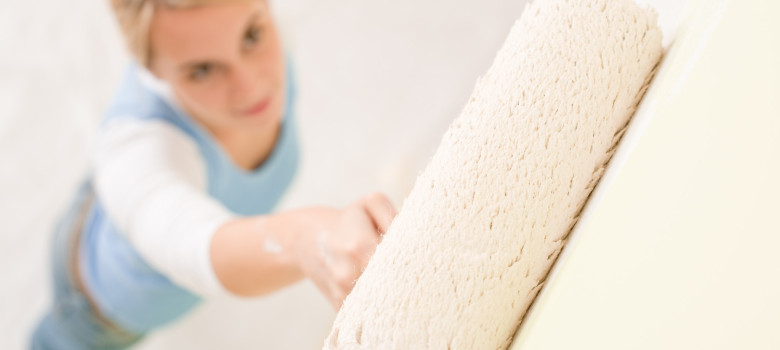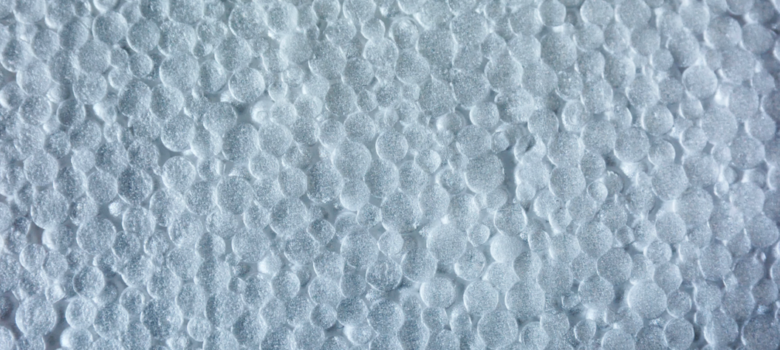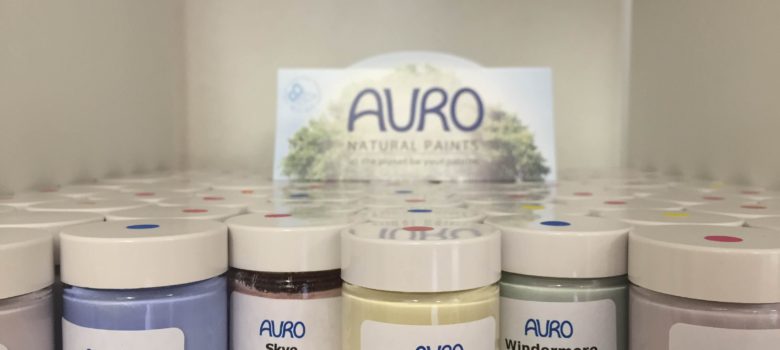
What is thermal insulation paint?
Thermal insulation paint first entered the energy saving market back in the late 1990s. Since then, there has been an increase in companies looking to exploit the seemly attractive potential in insulating paint. Insulating paint is said to consist of honeycomb or ceramic hollow balls supposedly invented by NASA, which don’t just slow down the heat transfer through the walls but actually stops it all together! Therefore the heat has no choice but to go back into the room. This means that your rooms don’t take as long to heat up and you don’t have to have your boiler on for as long.
Conventional insulation, installed internally, tends to involve 25mm of PIR board or 50mm of wool; although as building regulations have tightened up you can sometimes find an even thicker layer of internal insulation. The result of this thick layer of internal insulation is a reduced footprint of the rooms since it brings in the walls and reduces space available in the home. Insulating paint is obviously nowhere near that thickness, yet many companies claim that their product still offers 25% savings on customers heating bills. As paint is only applied to around a millimetre thick, these are truly incredible results – but are they true?
Are there independent studies on insulating paint?
Independent studies tend to be lacking on product pages for thermal insulation paint. Instead you might find Mrs. Smith saying “What a wonderful product, I’m so warm now”. “Scientific studies show” is also a go-to phrase used by the insulating paint market. When Alex Wilson, a well-known sustainability expert, was asked about the claims that insulating paint generates savings in domestic homes, he stated “they are making claims that defy the laws of physics”. It is claimed that thermal insulation paint works in a different way to traditional insulation techniques, in that it prevents heat from leaving the room. This would actually cause a build up of condensation as opposed to solving the problem.
 How does conventional thermal insulation work?
How does conventional thermal insulation work?
Conventional insulation works by slowing the movement of heat from one side of the insulation to the other. As you might expect, it is often true that the thicker the insulating material, the slower the movement of heat across it. It is all worked out in thermal conductivity measurements and U-Values. This means that your boiler doesn’t have to work as hard because it doesn’t have to replace as much lost heat. Insulation is very easy to measure, as all materials have a thermal conductivity value – which basically shows you how quickly heat is transferred through the object. A whole wall with solid brick and insulation will then have a U-Value – this is worked out by taking the thermal conductivity and the thickness. Whereas savings in cost and heat are easy to measure in conventional insulation techniques, it is impossible with thermal insulation paint. Using just the paint, you would have to have a layer of around 200mm to get the wall down to somewhere close to building regulations. That’s 4/8 times as much as the internal solid wall insulation.
What are the better alternatives to insulation paint?
Better alternatives do exist, although they differ in size, shape and effectiveness. Firstly, if you don’t want to lose any space in your home but your property is cold, then you should look to add insulation externally. This is called external solid wall insulation. As it is installed externally you can get thicker insulation, meaning increased savings and quicker payback – not to mention a warmer house. However, this is fairly expensive and can change the look of your property.
If you chose internal solid wall insulation, you would only install a thickness of around a half of what you would do externally. Although this insulation would still save you money and increase comfort, the payback will be slightly more as the costs are comparable.
For a thinner solution, Wallrock Thermal Liner KV600 offers a 4mm wallpaper which is designed to slow down heat loss. This obviously won’t have the same effect as internal or external solid wall insulation, but it has been proven to reduce your wall’s U-Value from 2.1 to 1.79W/mtr2K – and comes at a reduced cost.
In conclusion, the claims made by the insulating paint companies seem a little outlandish to us. There are proven methods of reducing heat loss and these are all backed by science. If you are looking to insulate your home, you might be better off investing your money in a proven technology!
Think we missed something? Do you have a different opinion?
Comment below to get your voice heard…














I used this several years ago,tends to reduce mould risk,otherwise not worth the money to have a sandpaper texture difficult to clean wall paint. double Bubble foil and air gap both sides on 12mm battens,then foil backed plasterboard dry lining definetly does work,materials reasonable cost though only viable from a labour cost consideration as a DIY endeavour.
I bought Thermalix from Amazon (about £20) which is an additive you add to your existing paint. It claims big energy savings but in reality does nothing. I would avoid insulated paint / insulated paint additives at all costs. As you say in article they simply aren’t backed up by any science!
Extremely sceptical on insulated paint. Something that thin can’t offer any real thermal resistance. Are there any scientific studies into the effects?
This is all about keeping a house warm. I live in Texas. My house is hot enough as it is. I want my house cooler not hotter. I don’t have a boiler and I only run the heat in my house 30 days out of every year. I want to know if this paint will help to keep my house cooler.
Heat insulation material isn’t just a one-way material. meaning it also keeps the incoming heat from the outside of your house. This way the air inside your property does not get as heated by the outside radiation and your air conditioner needs less time cooling the air. You can also use reflective IR sheets for your windows to avoid the incoming radiation.
I have been researching Gaina paint made in Japan, this paint was invented in conjunction with their space agency who used it on their rockets. I am told that the paint has to be made to order depending on the surface it is to be used on, this was a new one to me, however I have told them I intend to use it on plasterboard. At the time of writing I am awaiting a reply. Just FYI, I live in Australia where cutting edge substances are hard to get due to local monopolies and the Australian habit of casting doubt in the name of safety on any product that threatens the local market.
I have a back room condensation issue, I used warmwall – a paint that has ceramic ‘bubbles’ etc . I am ALWAYS sceptical of any things like this. BUT I can only tell you that since I applied the paint to the walls beneath the bay windows that go on to the garden, we have not had any issues. Prior to this I was cleaning mould off the wall paper every few weeks. I painted a coat on – left to dry and then re-emulsioned it.
I think – the science behind it as that it forms a barrier between the wall and the room (obviously) and so the wall does not become the coldest part of the room. That’s all the science I know, other than a cost of warm wall seems to have fixed the condensation I had in that area. It was not cheap if I remember correctly. I am about to use it again in a bedroom upstairs. I came across this page – when trying to remember where it was I bought it previously !!!
The law of diminishing returns means that after a point the benefit reduces. So the first mm of insulation could have a small but significant affect. A small layer reducing the temperature drop between a cold wall and warm damp air could reduce condensation and mould growth. The temperature gain might be small, but could be enough to have an impact on condensation and mould growth. However, if the damp is from the walls and the paint provides a layer that means the walls cannot breath that could be negative.
The occasional use of an effective dehumidifier in an old house despite the energy usage may be more beneficial.
I recently stumbled over the concept of thermal acrylic insulating primer and “designed to maximise efficiency of your under-floor heating, reducing heat lost down through the floor by up to 20%”. Always be wary of the words “up to” in any context, e.g. 0.000001% is within that range.
I remain sceptical, because I cannot find with a quick scan of the internet, any research on the subject.
We all know that white surfaces reflect a proportion of the heat from direct sunlight and black surfaces absorb it.
However, the thin silver film on the back of plasterboard is there for a reason and when fixed, is not exposed to sunlight, i.e. it has some benefit in the dark.
More obvious and better known is the use of silver materials in emergency blankets, which have other names such as first aid, survival, thermal and space blankets. The last name is because of the product’s development by NASA., about which see
https://spinoff.nasa.gov/Spinoff2006/ch_9.html
So, the fact that paint is very thin, by comparison with standard insulation materials, is not a reason to dismiss all thin materials.
I remember being shown what looked like a silver-grey paper on the solid (non-cavity) walls of an old house. That was incredibly thin and hard. When I placed the palms of my hands on the walls, they did not feel cold, i.e. I felt the heat from my hands.
What that material was I have no idea. It was solid and not like expanded polystyrene which is easily damaged, when used like wallpaper.
For minimum insulation standards in rented properties and the requirement for Energy Performance Certificates, the Energy Saving Trust, “supports the [UK] government in its ambition to raise the standard further to a ‘D’ rating by 2025 and a ‘C’ rating by 2030. ‘D’ by 2025 is already required in Scotland and the Scottish Government is consulting on an additional target of ‘C’ by 2030”:-
https://energysavingtrust.org.uk/minimum-energy-efficiency-standards-private-rented-sector/
Every credible means of raising the overall quality of insulation in all buildings, needs to be flagged-up by the construction industry and all governments.
The question is, whether paints with silver surfaces, have any significant insulation benefits when in the dark and/or painted over with any colour?
What of the so-called thermal insulating paints with microscopic bubbles? Sense or nonsense?
Construction industry research organisations please take note!!
if the u value of a thermal paint is different to conventional paint surely the heat transfer is changed. It may not be dramatic but it will be affected, yes/no?
Have you actually tried and used insulating paint? Done any scientific research? Got any evidence? If not your claims are as unfounded as theirs?
It wouldn’t be very difficult to test the performance of these paints, so the fact that the manufacturers aren’t publishing the results of independent tests would tend to suggest they don’t work in practice.
Ceramic coatings are a popular performance option on car manifolds to keep heat with the exhaust, it’s been used in formula one for years. So there seems to be some evidence to support the claims, whether these paints have the same effect is another matter :).
More than a comment, it’s a question. Does something like the Wallrock Thermal Liner work to keep a house cooler as well or it just works for warming it up?
I would say it is a money scam. I can imagine masonry protection water repelent cream/paint for outside bricks will work by reducing ingress of cold rain water to bricks, in combination with cavity wall insulation it may work really well.
But claims to shield your wall with micro glass spheres? What a load of b*. Many of wall cracks/holes fillers are glass based. Is that crack warmer to touch after drying? And you have more than 5mm thickness there usually.
If you don’t want the mould, there are much cheaper bathroom/kitchen (acrylic/latex) paints and heat reduction is possibly the same if not even greater as those expensive “thermal paints”. There are also some verified brands of specialist anti-mould paints which you can get in diy store chains. And sold in smaller packages and affordable prices than these “thermal” paints.
All advice I’ve read has to do with heat conservation. I
My problem is to keep the heat out of my bedroom The space between the roof and the wall (of the closets) is not insulated enough. The only way to insulate would be to somehow slide insulation from the attic which is small and difficult for a human except by crawling. SO, should I insulate from the inside of the closet by ??? Taping insulation material and of course loose some space. ???? all the condos have this problem. Thanks.
There is a paint-on product that is sometimes used on the lower portion of malt whisky stills. It’s more of a safety product to make that part of the still a little less hot for maintenance personnel to work beside – you can touch it without immediately burning yourself, but you certainly wouldn’t want to hold your hand on it. The U value is a fraction of traditional lagging.